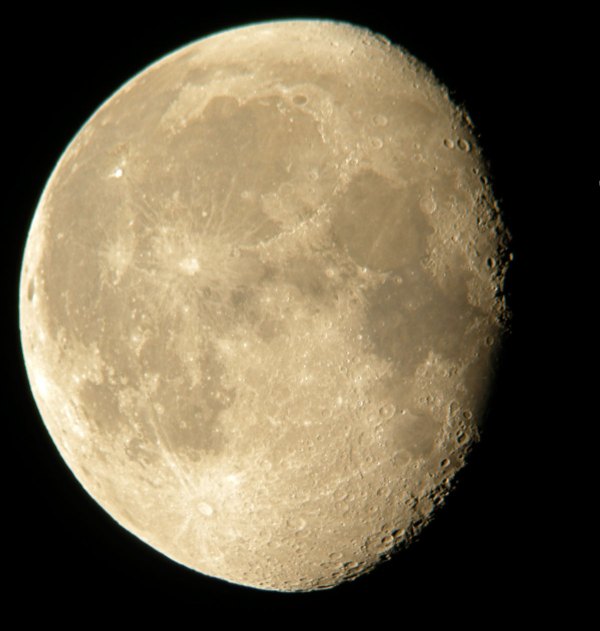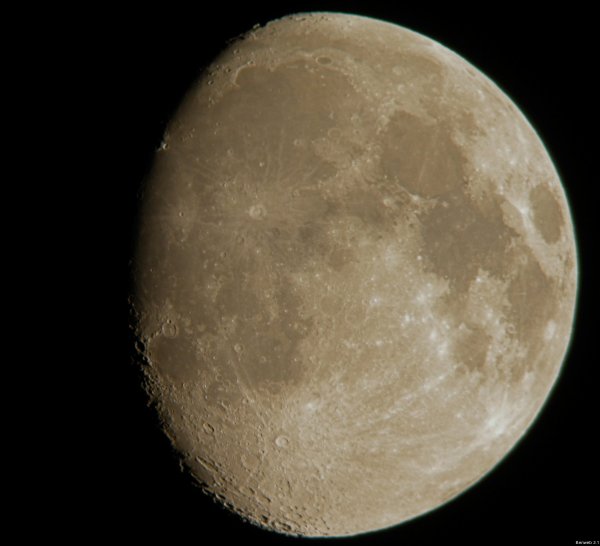Well, today I ran into the problem of how to name the moon. I had started off calling this series “January moon,” but that of course makes no sense now that we’re already two days into February and we’re only on Day 18. (Lunations run from new moon to new moon.)
I suppose this has to be considered the Winter Moon, since December’s second full moon (on December 31) was the Christmas moon, with the first full moon of December (on the second) being the so-often-wondered-about Blue moon.
So, here on February 2, 2010, is the Day 18 moon, waning gibbous phase, 0.86 illuminated:
The two most prominent craters from this morning’s image are Atlas (the larger one) and Hercules (the smaller one) near the advancing sunset line, just above center. Two maria, Serenitatis and Tranquillitatis appear at right, with the large crater Posidonius fairly prominent on the eastern edge of serenity. The prominent crater roughly at center right in this photo (which is not aligned correctly, as I am STILL waiting to get my photo editing tools installed correctly) is Macrobius.
Far to the south is the prominent grouping Janssen-Fabricius-Metus. Jansen is the largest crater, with a new, smaller crater (Janssen A) placed so that their northeast rims are almost contiguous in this photo, although seen in greater detail, the issue becomes fuzzier.
I consider the fact that I got any usable moon photo at all today, after 1.5 inches of rain last night and solid cloud cover most of the night, something of a triumph!
Just for comparison, here is the 11-day moon, which is also 0.86 illuminated:
As you can see, the terminator was advancing toward the western limb on day 11, bringing daylight to the western edges. In today’s image, though, the terminator line is encroaching on the visible face of the moon, spreading darkness from the eastern limb. In fact, the Mare Crisium is already dark. While today we’re watching sunset on Atlas, Hercules, and Macrobius, back on Day 11, it was all about sunrise on Herodotus and Aristarchus; Gassendi had already had its dawn and was becoming less and less prominent.
How far we’ve come in just seven days, with twelve more to go in this lunation!



